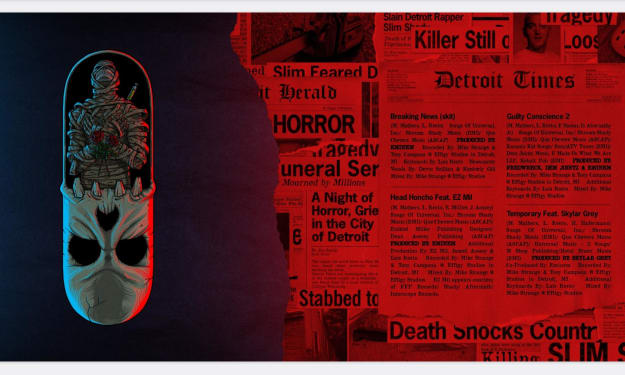
Music is a fundamental piece of any film. The craftsmanship advanced from the piano backup of silent movies to gigantic instrumental soundtracks, which become as notable as their motion pictures. Music in an advanced film can have numerous components and fill multiple needs to help producers recount the story. Music and authors are perceived and granted similarly with the entertainers and chiefs as an essential piece of cinema. Components of music from different arrangers and soundtracks are examined for comprehending their significant effect on the film.
Film writers are known for the music they make for different movies. Soundtracks are perceived not just as a famous piece of the film but also as autonomous structures that individuals pay attention to in their recreation time. Maybe the man that altered the craft of scoring films and gave future writers artistic liberty is Henry Mancini's dynamic from 1946 to his demise in 1994. His most famous works incorporate the in a flash perceived topics for Pink Panther and Peter Gunn just as "Moon River" from Breakfast at Tiffany's.
In the meantime, a musical virtuoso, Hans Zimmer, is viewed as one of the present-day film's most incredible film authors. He was behind the soundtracks of significant blockbusters like Interstellar, Inception, The Pirates of the Caribbean, The Dark Knight, and numerous others.
Incredible film arrangers don't just compose music to go with a film; they write music to amalgamate the sentiments and message. Gifted current authors regularly manage dependent on the idea of a film and ponder the topics before creation even beginnings. Much of the time, music is composed to offer custom security while being unique and unique. Mancini utilized both non-diegetic themes and diegetic tunes in his film soundtracks regularly with accurate jazz instrumentation. For instance, in "The Pink Panther Theme," the state of mind is strange while sensational and energetic. The elements of the appealing tune propose the person's equivocation and eccentricity.
Zimmer astonishingly joins real instruments and synth-tested sounds, yet a few sections might be copied. A few sensational topics in a single film can have a comparable tune, yet varying rhythms give it enough fluctuation. The beginning of Zimmer's methodology in many of his movies to creation depends on non-diegetic leitmotifs and the utilization of surfaces. His designs are in a flash perceived because Zimmer distinctively conveys the film's feeling and composes, for the most part, for the message, not the shallow substance (Morrell 10-11).
Melodies from Soundtracks
Frequently embedded melodies in the film, either behind the scenes to continuous activities (yet without intruding on discourse) or sung by characters themselves. Two notable pieces are "Someplace Over the Rainbow" by Judy Garland from 1939 The Wizard of Oz and "Mrs. Robinson" by Simon and Garfunkel from 1967 The Graduate. Both are lyrical structures with profoundly enthusiastic sections mirroring the subjects of the inward battles the characters in either film encounter. However, while "Someplace Over the Rainbow" is viewed as an ideal illustration of the AABA 32-bar tune structure, "Mrs. Robinson" is more strange, constantly rehashing the construction of ensemble followed by the section.
Judy Garland's version is a conventional pop number, with a solid spotlight on vocal industriousness. A symphonic track is unobtrusively seen behind the scenes with piano backup. The tune has a lethargic musicality, which was believed to be excessively delayed for the film from the beginning. In any case, the vocal center makes the song very characterizing of the person encountering trust.
This is known as the form of the tune, which is apparent in this song. It is trailed by a high C note on the rising octave addressing Dorothy's psychological picture of a fantasy home. Then, it gradually drops off to a low C in a stage-like shape on the scale to ultimately carry the young lady to the real world. The wizardry of this creation is the capacity to legitimately depict the feeling of longing in its expressive substance that is associated with the message of the film and identified with the fierce occasions of the financial downturn and war going on the planet ("Somewhere Over the Rainbow").
The piece "Mrs. Robinson" was composed explicitly for the film The Graduate, melodiously standing up the characters' sensations that were stopped inwardly. It is a society rock class with a 4/4-timing scheme with an 8-beat cadence joined with people agreement. There is the utilization of acoustic guitars, tambourines, shakers, and perhaps bongos. The tune has many instrumental ad-libs, for example, utilizing the minor key on a blues scale and playing harmonies over harmonies in short riffs. There are vocal harmonies in the ensemble and the accentuation on specific lines in the verses. The tune turned into a diagram beating accomplishment outside the film; however, it was a song to America's lost vision. ("Simon and Garfunkel").
About the Creator
Enjoyed the story? Support the Creator.
Subscribe for free to receive all their stories in your feed. You could also pledge your support or give them a one-off tip, letting them know you appreciate their work.






Comments
There are no comments for this story
Be the first to respond and start the conversation.